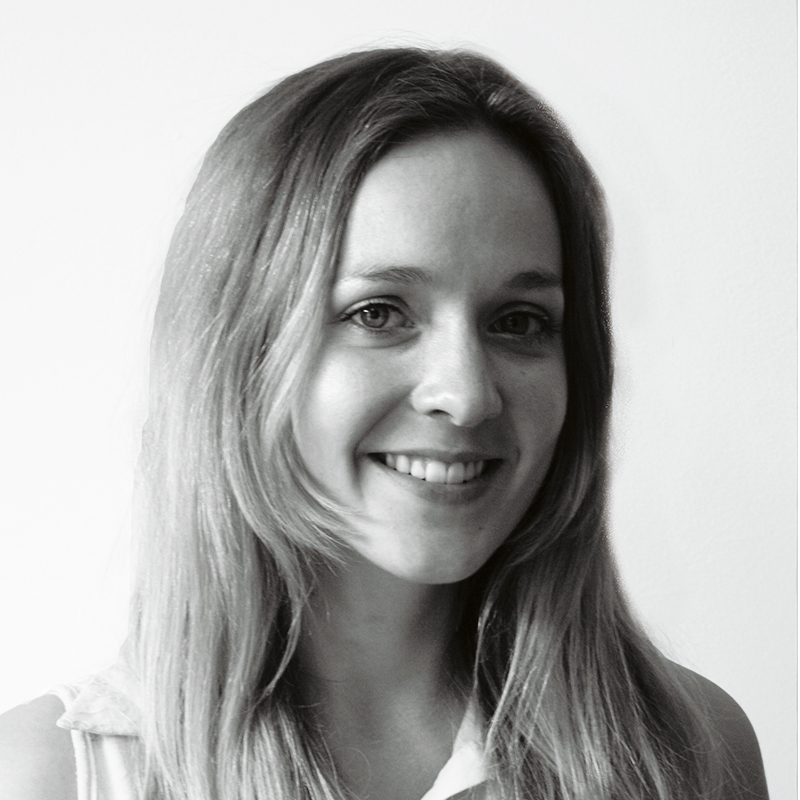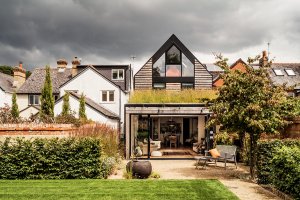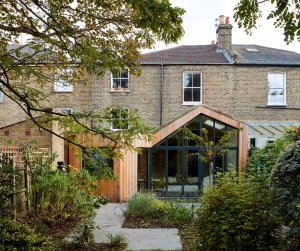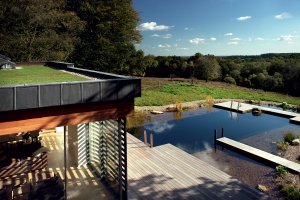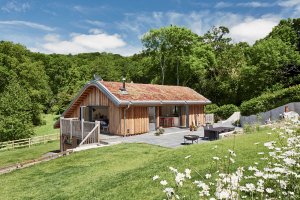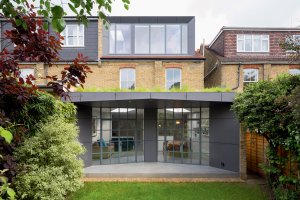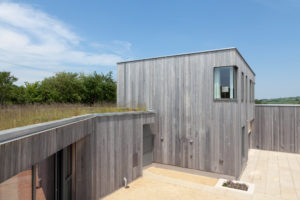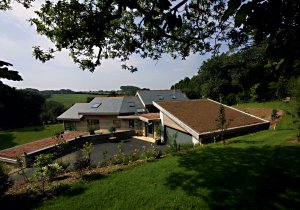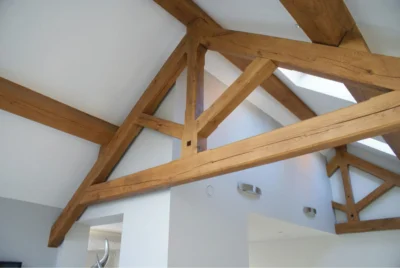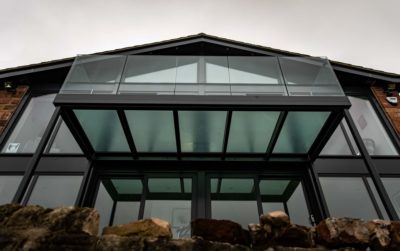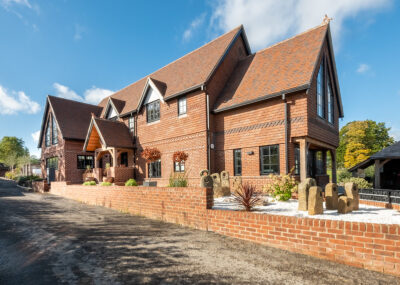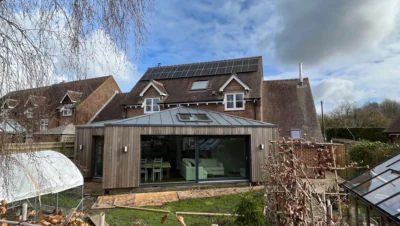Choosing a Green Roof System: Weight, Maintenance & More
The vivid hues of a green roof can add an inviting design flourish to your home, plus boost the house’s green credentials by forming an insulating layer that helps to reduce heat loss.
The term describes various systems, from simple setups with a hardy turf or sedum covering, to advanced roof garden schemes that are full of a selection of colourful shrubs.
This feature works particularly well in urban locations where it’s used as a tool to inject greenery into the setting.
Often specified as a covering for single-storey rear extensions, it provides a pleasant view for occupants looking down from the upper floors of the house, also adding an interesting visual detail from an exterior perspective.
In rural situations, green roofs can be used as a smart solution to help houses blend sensitively into the setting – particularly for Paragraph 55 (now Paragraph 79) homes constructed on green belt land.
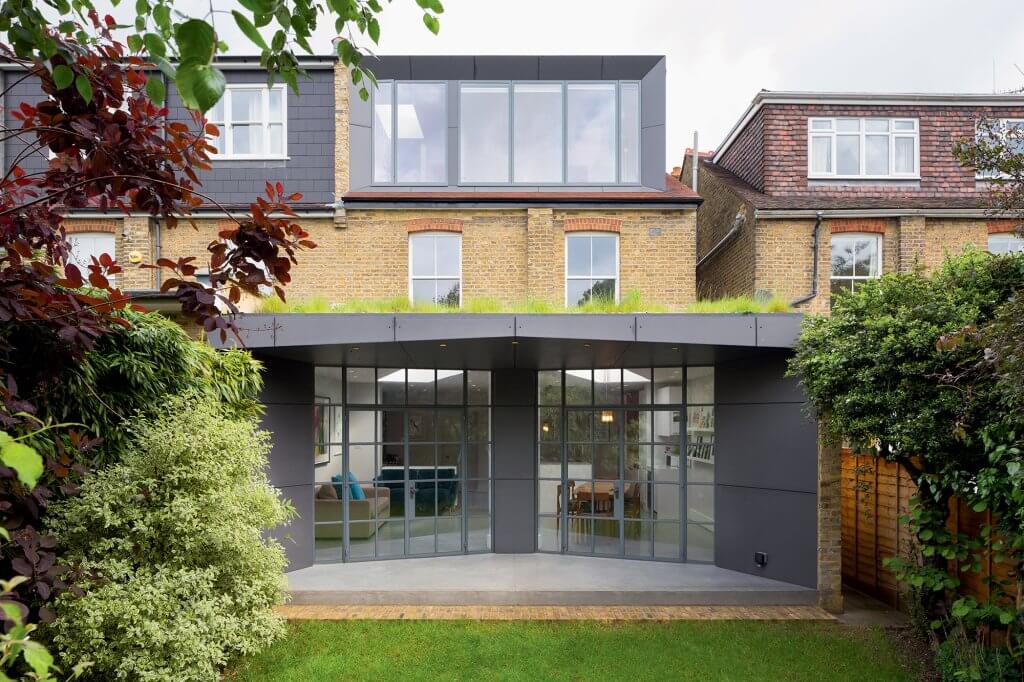
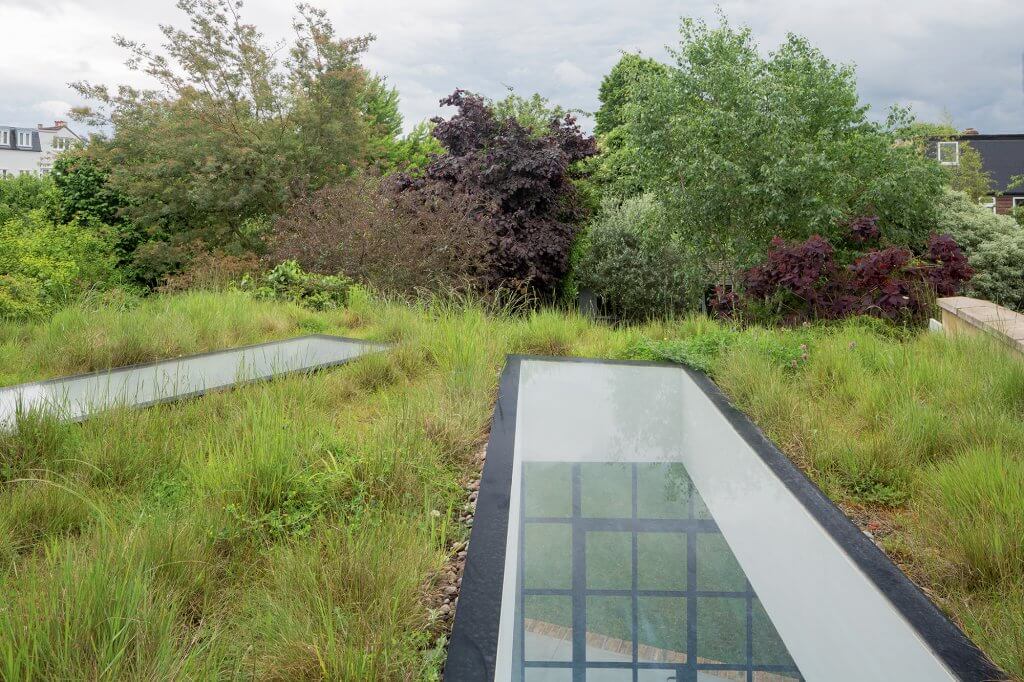
This is why green roofs are looked upon so well by planners, as it’s a straightforward way to show how the new building will be camouflaged within the plot, minimising its overall visual impact.
From a planning perspective, a green roof also establishes a biodiverse environment for bees, butterflies and insects, making up for the loss of habitat that may occur as a result of development.
Green roofs typically fall into one of two categories – intensive or extensive. The former is a flat roof garden planted with a deep layer of soil, while the latter comprises a thinner substrate and is more suitable as a finish for pitched structures. It’s worth noting that an extensive system will flourish best on a slope of 35° or less.
The planting scheme itself will depend largely on the orientation of your house, as certain plants thrive in sunny positions, while other varieties will bloom in shadier spots.
Many homeowners choose to personalise the setup by selecting seeds that correspond with the naturally-growing greenery in the local area. It’s important to consider maintenance at this stage of your project, as some plants require more upkeep than others.
Wildflowers will only need to be cut back once a year, for instance, while more advanced setups call for greater care, for which you may need direct access out onto the roof area.
Browse the gallery for more green roof design ideas:
Green Roofs Q&A
What is a green roof?
There are two types: extensive and intensive. Extensive green roofs have a thin layer of soil and are suitable for sloping roofs or roofs that are for visual effect rather than for walking on; intensive green roofs are flat roof gardens planted on a deep layer of soil. Whereas turf is suitable for intensive green roofs, a mix of hardy plants is appropriate for visual appeal on extensive green roofs.
How is a turf roof constructed?
A turf roof is built up of several layers on a suitably strengthened roof structure: note that it’s important to have a structural survey to assess roof strength, also it is only viable on a slope of up to 35 degrees, as retention is too difficult over that limit. Guttering is still needed around the edge of the roof so that excess water can run off. The layers comprise:
- A waterproof and root-resistant liner such as pond liner or other 300 micron damp-proof membrane, with an edging of wooden or aluminium battens to hold it in place on a sloping roof
- A moisture-retaining blanket or piece of carpet
- A layer of grit, stone or aggregate that aids drainage
- A filter (typically fleece) that allows water to pass through but retains the soil
- The plant layer and its soil
- Some turf roofs may incorporate additional layers of insulation and vapour control
How environmentally friendly is a green roof?
Plant and grit layers are green in every sense, the waterproof liner is polyethylene – but this is made from recycled plastic. The filter can be made of sheep’s wool.
What are the advantages of a green roof?
A turf roof is attractive to birds and insects. It is pleasing to the eye, a factor that can endear it to neighbours and planning authorities, especially if you are building a new house that is overlooked. If it’s a flat roof structure, it can be a place to sit out and relax – especially valuable in a city centre.
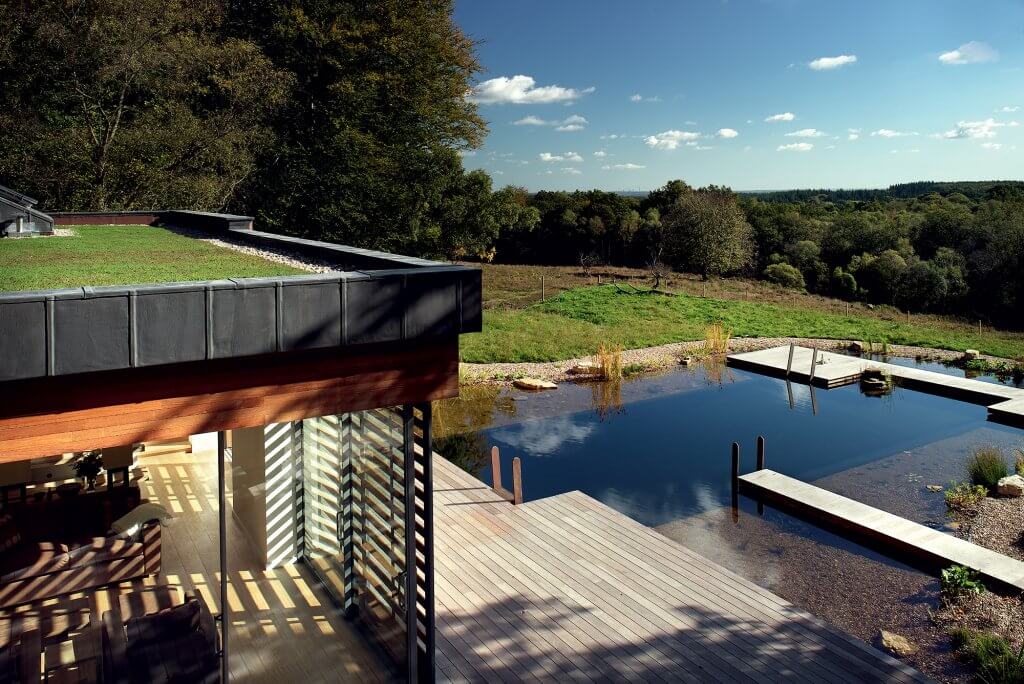
Situated within the New Forest National Park, this replacement dwelling by PAD Studio was carefully conceived to minimise impact on site
It adds some insulation and also reduces sound transmission by up to 40 per cent. Because a proportion of rainwater is soaked up and held by the plant layer, there is less run-off and so less demand on drains.
What are the disadvantages of a green roof?
On the minus side, although evergreen sedums, lavender and other plants are chosen for green roofs, because they are hardy and drought-resistant and can cope without water for up to a month, beyond that you need to water, as with a garden.
Turf will only be as good as the attention it receives. You may also need to control any unwanted bugs such as greenfly if these get too prolific. The plant-bearing moisture mat must make good overall contact with the liner: if there are any air pockets plants can dry out and die.
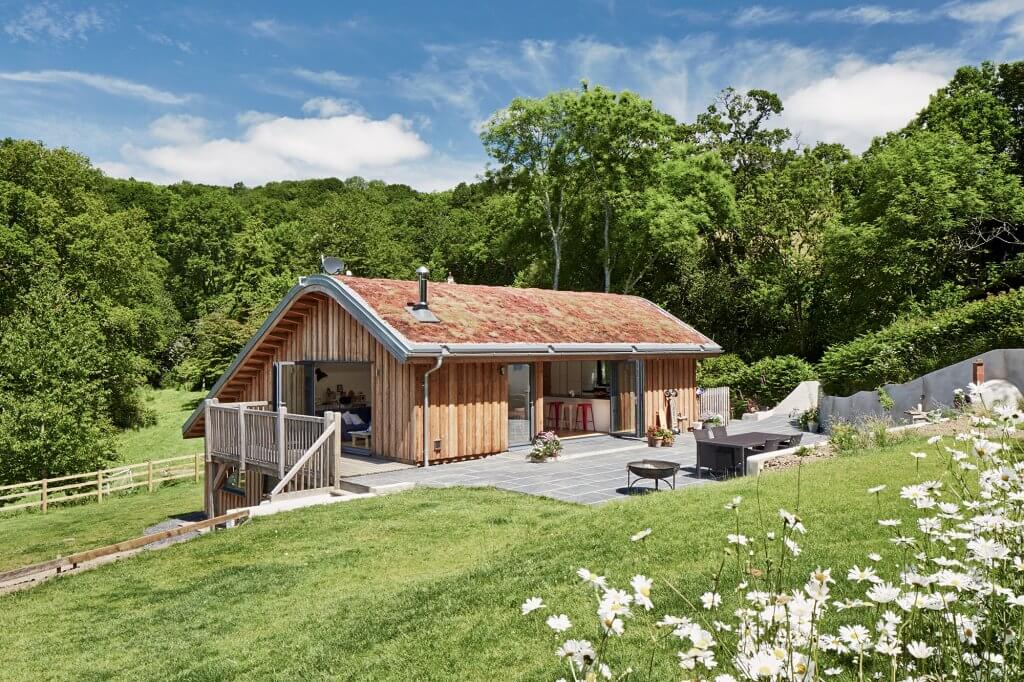
The owners of this house, designed by Living Space Architects, credit the positive planning outcome of the project to the sympathetic design of the property. The addition of a striking curved living roof helps the house to harmonise with the green setting
How much does a green roof cost?
You can have an extensive turf roof fully installed for £50-100 per m², or £130-140 per m² for an intensive green roof. (The wide variation depends on how close you are to the supplier.)
Alternatively, you can build up the layers yourself, and buy the growing layer as a length of planted matting. The cost varies depending on how mature the plants are, and this in turn affects how long it takes to achieve a visually pleasing all-over green coverage without gaps. NatureMat, a 24m² length of mixed plants on a growing medium and geotextile base layer, costs from £25 per m² from Blackdown Horticultural Consultants.
Generally it’s reckoned that plants take between 12-18 months to fully establish, and the more mature (and therefore more expensive) the plants you buy, the sooner you will have good all-over coverage.
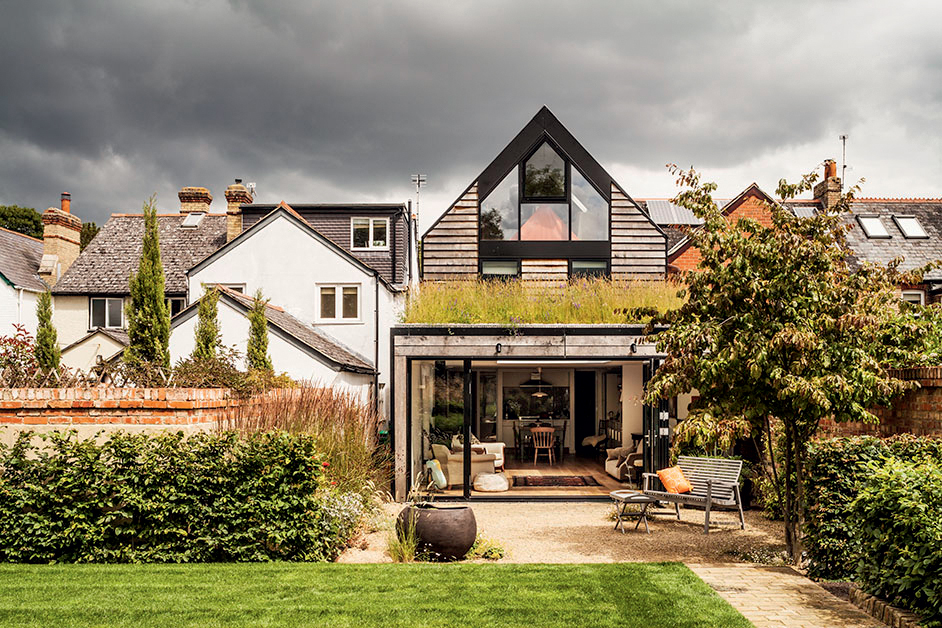
Waind Gohil + Potter worked closely with the homeowner, a landscape designer, to develop the plans for this family home in Oxford. The client was keen to incorporate a wildflower grass roof to cover the projecting ground floor structure, so that occupants on the upper floors could enjoy a pleasant view
Marketed as ‘A green roof in a box’, UrbanMAT is a 12m² length of sedum-planted matting that includes drainage and waterproof backing, and that costs £590 from Urban Roof Gardens. Bear in mind that plant matting is very heavy and needs at least two people to handle the laying.
Who are the major green roof suppliers and installers?
Major suppliers of the complete green roof package are Blackdown Horticultural Consultants and Bauder. These companies and others such as British Field Products and Urban Roof Gardens, will also supply the planted matting layer on its own. Liners are sold by Flag and International Construction Bureau.
Lizzie Webster, director & architect at Fraher Architects, provides her expert advice on how to add a green roof into your project
How does a green roof add to the visual appeal of a house?In an extension scenario, it’s an element that’s best-appreciated from above. Often with a large ground floor rear addition you end up looking down onto a vast area of roof from the first or second storey windows. A green roof is then used as a screening device to reinstate landscaped space lost via development. Of course, there’s the attractive visual aspect too. I’d say that most people choose green roofs for their aesthetics first and then sustainability – but with a green roof, these things come hand-in-hand. What are the benefits of installing a green roof?If green roofs comprise a thick growing medium, they help to insulate a property, so we find that our clients are keen to incorporate them to reduce their utility bills and cut down their carbon footprint. Of course, there’s the attractive visual aspect too. I’d say for most people that it’s usually aesthetics first and then sustainability – but with a green roof, these things come hand-in-hand. How can the planting scheme be personalised to create a unique look?This depends largely on how much substrate there is for the seedlings to grow into. Obviously some varieties need much more soil, whereas others – like sedum – can have a very shallow depth. There’s also seasons to consider. If you have a wildflower roof, for instance, it’ll die back during winter. So, you might mix the planting by putting sedum in at the same time. That means when the summer flowers disappear, you’ll still have an orange and red carpet during the winter months. Are there any types of plants that you’d recommend for a green roof?We often use a mix of wildflower and sedum. At the moment, we’ve got a covering of the former on our roof that incorporates sunflowers and poppies. But there are often blends that are appropriate to different locations. For example, there’s a combination of seeds you can get for planting green roofs for exposed coastal properties, as opposed to hillside, wet ones. How do you know if your home is suited for a green roof?First of all, you’ll need to check the orientation of the surface to see whether this solution is suitable. The pitch of the structure shouldn’t be too steep, as flat or shallower roofs adapt better to a green roof. The main thing is to speak to a structural engineer to know if the roof can support the weight of the green layer, because once it’s absorbed rainwater it can get very heavy. You can retrofit a green roof, but in these cases you may need to use a much lighter weight green roof system – a sedum layer with a light soil is a good solution. Check the waterproofing consistency of the structure, too. It’s vital to ensure you’ve got a robust surface in place first. |
Top image: The team at Designscape put together the architectural plans for this visually striking contemporary property with a living roof that forms an attractive covering for the studio attached to the main dwelling.
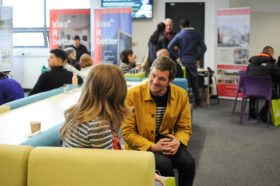
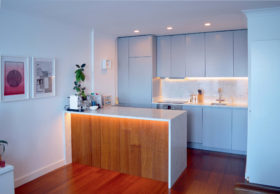































































































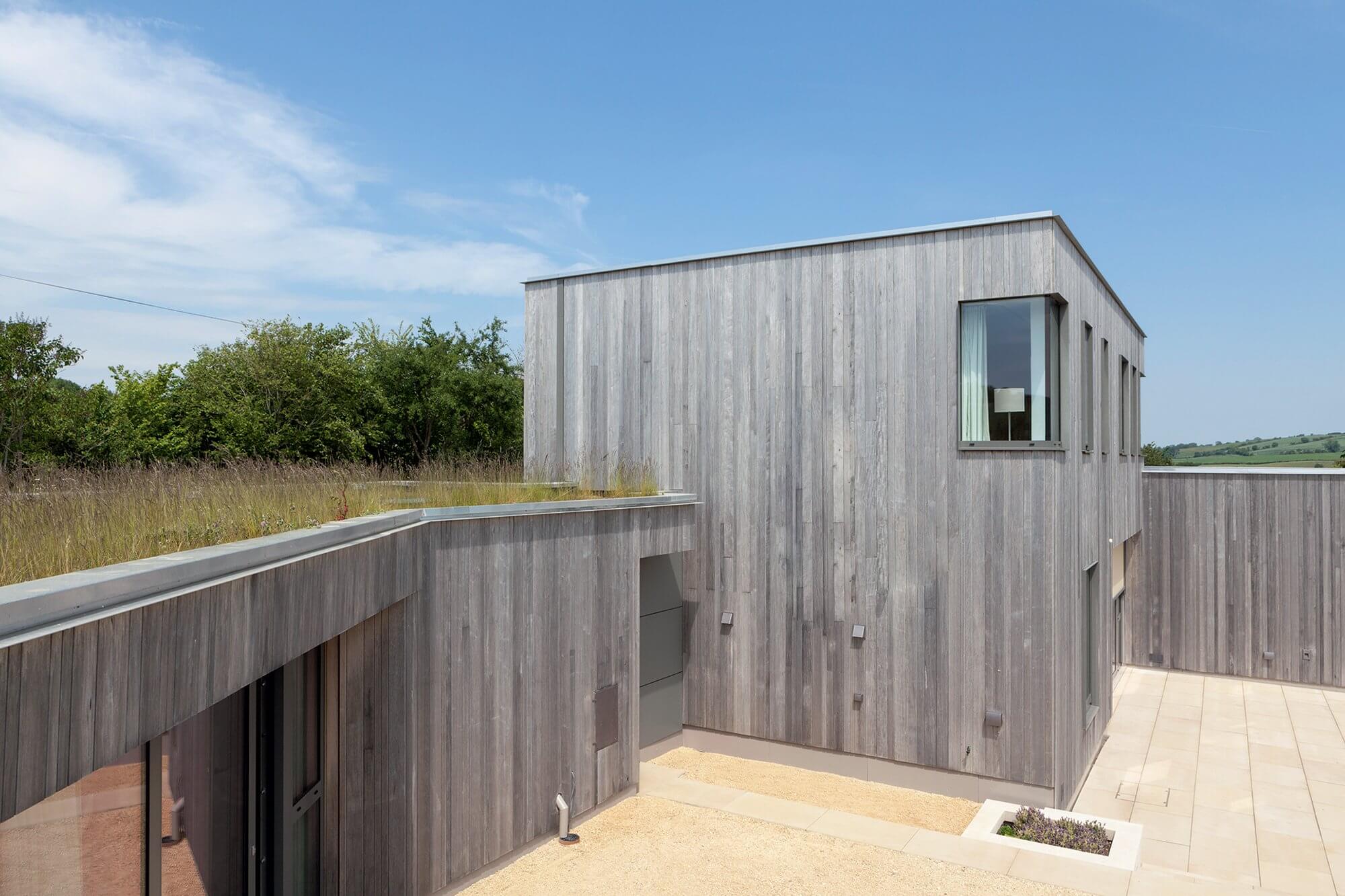
 Login/register to save Article for later
Login/register to save Article for later
